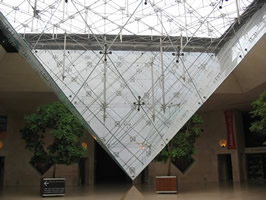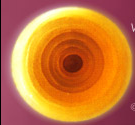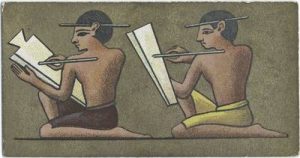Literature Reviews
Cautionary Tales
One very strong note of caution, the Web provides us with seemingly limitless resources for scholarly exploration. If the only avenues to scholarly writings you had available to you were Google and Wikipedia, you might be able to pull together a relatively good undergraduate paper of three to five pages. For your paper and literature review, you need to use some of the resources the University Library provides. We have provided links to many resources from this site, but do not limit yourself if you see something in the popular literature that might lead you to further scholarly resources. While you are casting a wide net to cover your topic, it is also a very good time to review some of the criteria needed for critical thinking skills. Keep in mind at all times the consideration of authority, bias, persuasiveness, and contribution to the literature for each of the works you are reading. Focus your reading on leading authorities in your area, materials from highly regarded publishers, and those contributions that are most directly related to your topic. Test your knowledge on the topics of plagiarism and critical thinking skills through this brief tutorial related to these skills.
The Literature Review as a Process
The first step in the process of reviewing the literature is to identify a useful set of materials to explore. Where should you begin? There are two ways to approach the identification of appropriate materials. You can use the “citation pearl searching” approach. In this process, you begin with an article of particular interest in the topic you are exploring. This could be a reading from a class, a mention in a textbook or something you have found searching the library catalog or databases. Look at the references found in that work and begin to build a body of literature that is relevant for your topic. Using citation tracking tools like the Web of Science or Scopus you should be able to amass a number of writings related to the original work including articles cited by the original author and articles that cite the original author. Once you have digested these articles, go back to the databases and catalogs and see if you can find more material by searching the names of the authors you have collected, or search using the vocabulary you have developed.
 The second way to approach your information gathering phase is the standard hierarchical search. Here you might begin with an essay in an encyclopedia and explore the references found at the end of the essay. Again, taking the terms and authors you find there explore your topic using a variety of catalogs and databases. There are literally hundreds of resources you can use to explore your topic including journal articles, books, government documents, statistical databases, newspapers, archives, and more. There are also handbooks, dictionaries, and annual reviews that will provide you with additional sources for your work whichever method you choose for your search.
The second way to approach your information gathering phase is the standard hierarchical search. Here you might begin with an essay in an encyclopedia and explore the references found at the end of the essay. Again, taking the terms and authors you find there explore your topic using a variety of catalogs and databases. There are literally hundreds of resources you can use to explore your topic including journal articles, books, government documents, statistical databases, newspapers, archives, and more. There are also handbooks, dictionaries, and annual reviews that will provide you with additional sources for your work whichever method you choose for your search.
The Literature Review as a Product
The literature review provides you, the student, with the foundation you need to intensively explore a topic. It is an overview and evaluation of the writings in a specific area of interest. You will find literature reviews in many types of writing – annual reviews by commercial publishers, scholarly journal articles, theses, and dissertations to name a few. The ultimate purpose of the literature review is to bring together and analyze significant writings on a topic. The purpose of the literature review is to show your intellectual grasp of a topic by sharing the knowledge that exists in your area of interest and evaluating this knowledge. It will help you identify important theorists, research groups and writing in your area of interest as well as the vocabulary, methods, history, and key variables used in the field of study.
Annotated bibliographies, abstracts, and literature reviews
The annotated bibliography can be an overview of the significant writing in a topical area, but it does not usually include the depth of analysis required in a literature review. You can see an example of an annotated bibliography in the types of tools librarians provide in their research guides. The listing of these tools is done in a non-evaluative manner for the most part. Another type of non-evaluative bibliography can be found in most databases, also known as abstracting services such as the International Bibliography of the Social Sciences, Worldwide Political Science Abstracts and EconLit. The abstracts attached to the journal and book citations in these resources provide you with an important opportunity to see what research has been done in a field, a brief paragraph, sometimes provided by the author, regarding the content of the work, and, in the case of most of our electric resources, an opportunity to access the full article. The literature review will be developed using these tools, but it is also a creative work by the writer that pulls this information together and analyzes the key aspects of what has been written.
The key aspects of the literature review then are both the discovery of the materials related to the topic and the description, evaluation and integration of this material into a type of narrative.
Pulling it all together
The literature review highlights your information skills and your ability to provide critical analysis of what you have found. Your literature search is a creative process, employing your problem-solving skills, your flexibility, and your tenaciousness. The end result of this search is to enable you to become even more creative in the way in which you pull all of the elements together. When you are done, try some self-evaluation of your work. Review the coverage, synthesis, methodology, significance and writing you have employed in developing your literature review. Your literature review should be able to stand alone as a useful document that discusses the topic you have chosen in an effective and readable form.


